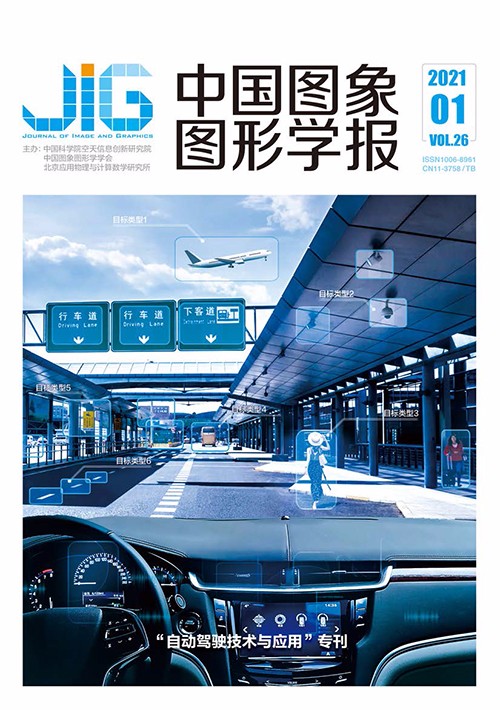
自动驾驶地图的数据标准比较研究
詹骄1, 郭迟1,2, 雷婷婷3, 屈宜琪4, 吴杭彬4, 刘经南1(1.武汉大学卫星导航定位技术研究中心, 武汉 430079;2.武汉大学人工智能研究院, 武汉 430079;3.武汉大学测绘学院, 武汉 430079;4.同济大学测绘与地理信息学院, 上海 200092) 摘 要
作为实现汽车自动驾驶的关键基础设施,自动驾驶地图能够提供大量准确且语义丰富的数据来帮助用户以更精细的尺度了解周边环境状况,辅助感知、定位、驾驶规划与决策控制,满足智能时代多种高层次的应用需求,进而切实推动我国自动驾驶相关领域的发展与商业化应用。自动驾驶地图的数据标准作为自动驾驶地图生产应用的指导性规范之一,是自动驾驶地图数据标准化的基准。当前我国自动驾驶相关领域对自动驾驶地图标准化的需求迫切,地图数据标准化已成为业界共同关注的热点问题。为解决自动驾驶地图数据标准化问题,切实推动自动驾驶地图的高效发展,本文对自动驾驶地图的数据标准进行比较研究。首先介绍国内外主流的自动驾驶地图数据标准,然后针对其中4种:导航数据标准(navigation data standard,NDS)、OpenDrive、智能运输系统智能驾驶电子地图数据模型与交换格式和道路高精度电子导航地图数据规范进行分析比较研究,主要从数据结构、数据模型、地图渲染和协同应用4个维度展开,并在各个维度上给出数据标准编制时建议遵循的原则。基于分析比较研究的结果,总结出自动驾驶地图数据标准编制时建议遵循的原则。通过对自动驾驶地图的数据标准进行分析比较研究,归纳总结出数据标准编制时建议遵循的原则,这些建议遵循的编制原则对我国相应规格标准的制定具有借鉴意义。
关键词
Comparative study on data standards of autonomous driving map
Zhan Jiao1, Guo Chi1,2, Lei Tingting3, Qu Yiqi4, Wu Hangbin4, Liu Jingnan1(1.Research Center of GNSS, Wuhan University, Wuhan 430079, China;2.Artificial Intelligence Institute, Wuhan University, Wuhan 430079, China;3.School of Geodesy and Geomatics, Wuhan University, Wuhan 430079, China;4.College of Surveying and Geo-informatics, Tongji University, Shanghai 200092, China) Abstract
As a key infrastructure to realize autonomous driving, an autonomous driving map can provide a large amount of accurate and semantically rich data to help users understand the surrounding environment in a more detailed scale; assist perception, positioning, driving planning, and decision control; and meet various high-level application requirements in the era of intelligence and then effectively promote the development and commercial application of China's autonomous driving related fields. An autonomous driving map data standard guides the production and application of autonomous driving maps, thus serving as the benchmark for the standardization of autonomous driving map data. At present, there is an urgent need for autonomous driving map standardization is urgently needed in the fields related to autonomous driving in China, and map data standardization has become a hot issue of common concern in the industry. To solve the problem of autonomous driving map data standardization and promote the efficient development of autonomous driving maps, this paper conducts a comparative study on data standards of autonomous driving maps. First, this paper briefly introduces the mainstream autonomous driving map data standards at home and abroad. Popular international autonomous driving map data standards mainly include NDS(navigation data standard), OpenDrive, and Kiwi. The development of autonomous driving map data standards in China started relatively late compared with that in foreign countries. Most of the relevant standards are in the state of formulation or project approval and have not been commercialized on a large scale. At present, domestic mainstream autonomous driving map data standards mainly include intelligent transportation system-intelligent map data model and exchange format specification, road high-precision electronic navigation map data specification, and Apollo OpenDrive. Second, this paper analyzes and compares four of them, namely, NDS, OpenDrive, intelligent transportation system-intelligent map data model and exchange format specification, and road high-precision electronic navigation map data specification. The comparative research is mainly carried out from four dimensions of data structure, data model, map rendering and collaborative application, and the proposed principles for data standard compilation are given in each dimension: 1) In terms of data structures, the data structure of autonomous driving map can be divided into logical structure and physical structure, which are closely related and often serve as the basic content of each data standard to determine the definition of data standard in map data file storage format and data logic organization model, thus directly affecting the compilation of data standard. By comparing and analyzing the data structures defined by the four autonomous driving map data standards, this paper clearly suggests that the database technology should be used to store map data in the form of tables, and the hierarchical data organization method should be adopted to support flexible and efficient data storage, interaction, and update. 2) In terms of data models, the data model is used to specify the elements (objects), attributes, and relationships contained in the autonomous driving map data, and explains how to carry out data classification, coding, geometry, and topology representation, thus often serving as the core content of each data standard. By comparing and analyzing the data models defined by the four autonomous driving map data standards, this paper clearly suggests that, on the basis of further expanding the data content of autonomous driving map to include more relevant elements and attributes, a method similar to map layerization should be adopted to modularize the data organization (including geometric topology network data), to improve the flexibility and applicability of autonomous driving maps. 3) In terms of map rendering, autonomous driving map will be oriented to the human-computer shared environment in the future, which needs to meet the needs of both human map recognition and machine understanding. Therefore, the map data standard should include map rendering and support hierarchical map display to improve the efficiency of map display and path calculation. 4) In terms of collaborative applications, after years of development, a standard navigation map has become rich in road traffic information, such as point-of-interest information, which focuses on describing the real world in a macro sense. By contrast, an autonomous driving map focuses on describing the environmental conditions of roads and surrounding areas, as well as the topological connection relationship between lanes. Although an autonomous driving map has more accurate road and lane geometry data, it lacks the rich data content of standard navigation maps and especially lacks point-of-interest information, which makes the navigation function difficult to realize. To address this problem, the cooperative application relationship between autonomous driving map and standard navigation map needs to be established, which can ensure complementary information between an autonomous driving map and a standard navigation map, and then effectively deal with different requirements. On the basis of the results of comparative analysis, this paper summarizes the principles that should be followed when compiling the data standard of autonomous driving maps. By analyzing and comparing the data standards of autonomous driving map, this paper summarizes the proposed principles in compiling data standards, which are of reference significance to the formulation of relevant specifications and standards in China.
Keywords
autonomous driving autonomous driving map data standard autonomous driving map data standard compiling principle
|



 中国图象图形学报 │ 京ICP备05080539号-4 │ 本系统由
中国图象图形学报 │ 京ICP备05080539号-4 │ 本系统由